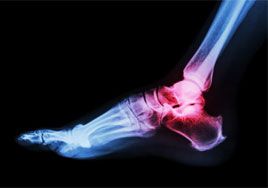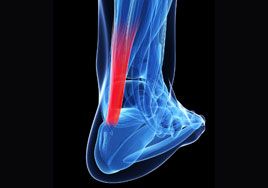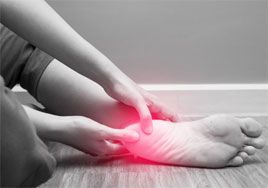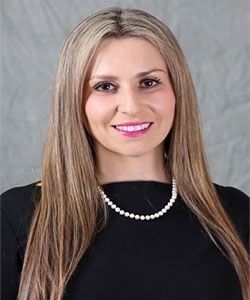Foot and Ankle Clinic
Have you experienced foot pain?
According to a survey conducted by the American Podiatric Medical Association, 77% of Americans have experienced foot pain, but only a third of those affected have gone to a podiatrist for treatment. MidAmerica’s state of the art Foot and Ankle Clinic and our foot and ankle specialists aim to change that by offering excellent care and improving quality of life for the enormous population of Americans who suffer from foot conditions.
Common Conditions of the Foot and Ankle
Foot and Ankle Fractures

A foot or ankle fracture can range from a crack in the bone to severe breakage. The symptoms are pain, swelling, and difficulty walking; severity and longevity of any of these symptoms should lead a patient to see a doctor immediately. People with certain conditions like arthritis or osteoporosis (reduced bone density) are at a higher risk for foot and ankle fractures.
A patient who sees a doctor for a foot or ankle fracture can expect that their doctor will check change of motion and may ask them to walk around. Treatment can range from immobilization in a cast to surgery, in the case of serious fractures. Recovery time varies from around six months for minor cracks, to possibly years for severe cases.
Bunions

A bunion is a bump in bone that grows at the base of one’s toe. One toes pushes against another, forcing a toe joint to swell and grow disproportionately large. Skin over bunions becomes red and sore. Bunions can be caused by inherited foot shape or injury to the foot that pushes toes together.
Nonsurgical treatments for bunions include changing shoes, using shoe inserts, or using padding or splints that guide the toes into growing correctly. In severe cases, a doctor may need to perform surgery to remove a bunion. This surgery can involve removing an affected bone, straightening or realigning a bone, or fusing joints together.
Achilles Tendonitis

The Achilles tendon is a band of tissue that connects the heel to the muscles at the back of the leg. This tendon can become strained and sometimes torn from overuse; strain to the Achilles tendon is called Achilles tendonitis. This condition is common in runners and athletes. Doctors attempting to diagnose Achilles tendonitis use x-rays and ultrasound to look at the tendon and determine a course of treatment.
Treatment often involves lifestyle changes; orthopaedic inserts and physical therapy are used to change the way a patient moves their leg, reducing strain on the Achilles tendon. In cases where the Achilles tendon is torn, a doctor may recommend surgery.
Plantar Fasciitis

Plantar Fasciitis is the inflammation of a band of tissue (called the plantar fascia) that runs from the toes to the heel. It manifests through a stabbing pain in the heel. It is common in runners and athletes; repeated stress on the plantar fascia causes small rips and tears that can cause extreme pain. Plantar fasciitis can lead to chronic heel pain, or changes to one’s walk that lead to back, neck, and other problems.
Other common foot and ankle conditions treated at MidAmerica include:
-
Cardiovascular Disease
Examination at MidAmerica
A patient coming to MidAmerica with foot or ankle pain can expect their physician to conduct a physical examination. When examining the feet and ankles, physicians look for:
If the physician sees any of these warning signs, they will conduct further tests like X-Rays, CTs and MRI scans to diagnose the patient’s condition.
Treatment at MidAmerica’s Foot and Ankle Clinic
MidAmerica offers a variety of treatments for foot and ankle conditions, with both surgical and non-surgical options. Some of the treatments offered at MidAmerica are:
After foot or ankle surgery, the patient needs to take a period of rest. Experts recommend stocking up on food and supplies before surgery, as driving and walking become difficult afterward.
Patients can apply for a Temporary Disabled Placard (the sign one hangs in their car that allows them to park in disabled spaces) for the period after their surgery.
Some ride-share companies offer disability-accessible vans that can be helpful to patients after foot or ankle surgery.
Recovery times vary, but tenderness and swelling from minor procedures generally resolve within 3-4 months. Recovery from complicated procedures can take a year or more. Patients should stay in contact with their doctors. At MidAmerica, physicians will schedule follow-up visits to evaluate post-surgery progress, and determine any next steps a patient needs to take in the course of their healing.
At MidAmerica, physicians, surgeons, and physical therapists are all in one location, all constantly communicating. This allows specialists to coordinate patient care from the moment a person walks in for an examination, through choosing a treatment, over recovery, and into healing. Call (708) 237-7200 to learn more.




